Senior Project Members
 Prof Antony Eastmond
Prof Antony Eastmond
Antony Eastmond read history at Oxford University and completed a PhD in the art of medieval Georgia in the Caucasus at The Courtauld Institute of Art in London. Key themes in Antony’s work centre on the use of art to manufacture, display and manipulate identities on a public stage, especially on the frontera between religions and cultures. Antony has taught at The Courtauld since 1995, after nine years in the art history department at the University of Warwick where he was Head of Department in his last two years. His research is divided between topics in Late Antique and Byzantine art and topics relating to the Caucasus (Georgia and Armenia), and relations between the Christian and Islamic cultures there. He has recently published a study of women and identity in eastern Anatolia and the Caucasus on the eve of the Mongol invasions in the thirteenth century – a region known as the land where three worlds meet.
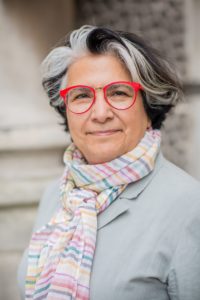 Dr Sussan Babaie
Dr Sussan Babaie
Sussan Babaie is the Andrew W. Mellon Reader in the Arts of Iran and Islam at The Courtauld Institute of Art, University of London. Her research and teaching focuses on the early modern period in the Persianate world—Iran, Afghanistan, Central Asia. She also writes and lectures on contemporary arts of Iran and the Middle East. She is the author of the award-winning Isfahan and Its Palaces: Statecraft, Shi‘ism and the Architecture of Conviviality in Early Modern Iran (2008).
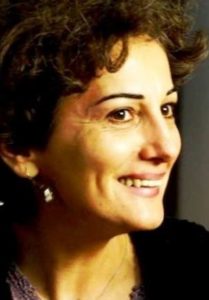 Dr Nazenie Garibian
Dr Nazenie Garibian
Nazenie Garibian is a senior researcher at the Matenadaran Institute of Ancient Manuscripts (Erevan) and Professor and Head of the Research Centre at the State Academy of Fine Arts of Armenia. She is also a member of the editing committee for the series published by the Dipartimento di Storia Culture Civiltà at Bologna University and a member of the committee of the Association Internationale des Etudes Arméniennes and of the National Committee of Byzantine Studies of Armenia. She got her MA in Art History and Theory at the Academy of Fine Arts of Erevan (1988) and then completed her PhD in Art History at the Historical-Philological Department of the Ecole Pratique des Hautes Etudes at Sorbonne in Paris (2005). Her research concerns the history, art and architecture of the Caucasus in the Early Medieval period in relation to the Byzantine and Iranian cultural environment, with a special focus on the sacred traditions of Jerusalem and the design and decoration of holy places. She has written two monographs and about 30 articles in various Armenian and international peer reviewed journals.
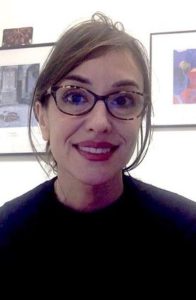 Prof Christina Maranci
Prof Christina Maranci
Christina Maranci is the Arthur H. Dadian and Ara T. Oztemel Chair of Armenian art and architectural history at Tufts University and is also Chair of the Department. She has held visiting positions in Armenian art at the University of Chicago and the University of Michigan, Ann Arbor. She is the author of three books and over sixty articles and essays on medieval Armenian art and architecture; including an introduction to Armenian art (Oxford UP, pub. date September, 2018). Her most recently published monograph on the seventh-century architecture of Armenia won both the Sona Aronian Prize for best Armenian studies monograph and also the Karen Gould Prize for Art History from the Medieval Academy of America. Maranci has engaged with the cultural heritage of Armenians for over a decade, working on historically Armenian churches and monasteries in what is now Eastern Turkey. Her campaign for the Cathedral of Mren, near Ani in present-day Eastern Turkey, resulted in its inclusion on the World Monuments Watch List for 2015-17.
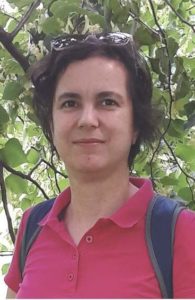 Dr Oya Pancaroğlu
Dr Oya Pancaroğlu
Oya Pancaroğlu is Professor and Chair of the Department of History at Boğaziçi University, Istanbul. Her research focuses on the history of early and medieval Islamic art, with a special focus on Islamic architecture in medieval Anatolia and on the production of fine ceramics in pre-Mongol Iran. Her teaching encompasses the art and culture of medieval Islamic societies from the eastern Mediterranean to Central Asia.
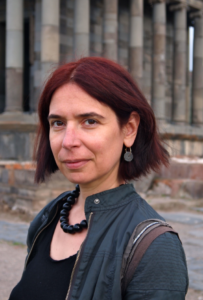 Prof Ioanna Rapti
Prof Ioanna Rapti
Ioanna Rapti has been a Professor at the Ecole pratique des Hautes Etudes (Directrice d’études) since 2014 in the history of art and archaeology of the Byzantine world and the Near East. Born in 1970 in Greece, holding Greek citizenship, she received her PhD from the l’Ecole pratique des Hautes Etudes in 1999 and her habilitation in 2013. She has been one of the curators of exhibitions at the Louvre on Armenia (2007) and Russia (2010). Her work focuses on Armenian miniature painting and on the archaeology of Cilicia but extends to other areas of Armenian art and examines the interactions between different cultural components of Anatolia and the Near East. She is also responsible for the Millet photo-archive of the Ecole pratique des Hautes Etudes which includes early photographs of Byzantium and the Near East, but also graphic and architectural drawings of Byzantine monuments and paintings.
Prof Zaza Skhirtladze
Zaza Skhirtladze is Professor of art history at Tbilisi State University. He has written extensively on the art of the Caucasus and the Holy Land, and has a particular interest in pilgrim graffiti of the middle ages at religions sites.
Junior Project Members
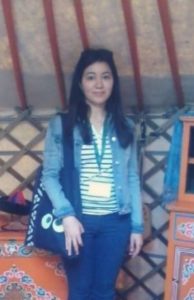 Zarifa Alikperova
Zarifa Alikperova
Zarifa Alikperova is a first year DPhil student in Oriental Studies at the University of Oxford. Her research interests lie in Islamic art and material culture of the Middle East, with a focus on cross-cultural contacts and exchanges during the medieval and early modern periods.
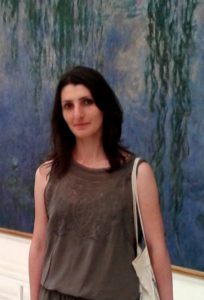 Arpine Asryan
Arpine Asryan
Arpine Asryan is a PhD student at the Institute of Arts of National Academy of Sciences of the Republic of Armenia (NAS RA). She is also a junior scientific researcher at Mashtots Research Institute of Ancient Manuscripts, the Matenadaran. Her research focuses on miniatures and sculpture of 10-11th centuries, particularly ornamental sculpture on monuments of Tayk/Tao in the 10th -11th Centuries.
 Dr Niamh Bhalla
Dr Niamh Bhalla
Niamh Bhalla is Course Leader and Lecturer in Byzantine and Islamic Art at the New College of the Humanities in London. She completed her PhD at the Courtauld Institute of Art in London in 2014 on medieval images of judgement in the eastern Mediterranean world. Her research focuses on using contemporary theory to open up fresh insights into the embodied experience of art and architecture in the classical and medieval periods. She explores themes such as space, memory, the body and gender in relation to how visual imagery interacts with its architectural setting. Niamh manages research projects at The Courtauld Institute and at the Victoria and Albert Museum in London.
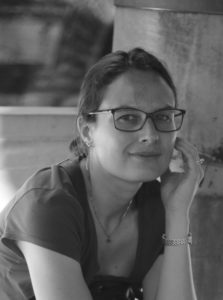 Dr Patricia Blessing
Dr Patricia Blessing
Patricia Blessing is Assistant Professor of Medieval and Islamic Art at Pomona College. She completed her PhD at Princeton University in 2012. Her book, Rebuilding Anatolia after the Mongol Conquest: Islamic Architecture in the Lands of Rūm, 1240–1330 (Ashgate, 2014) investigates the relationship between patronage, politics, and architectural style after the integration of the region into the Mongol empire. She is the editor, with Rachel Goshgarian, of Architecture and Landscape in Medieval Anatolia, 1100-1500 (Edinburgh University Press, 2017). Her current projects focus on 15th-century Ottoman architecture and its relationship with the Timurid and Mamluk realms, the materiality of architecture and textiles in the medieval Mediterranean, and the historiography of Islamic architecture in the former Ottoman Empire.
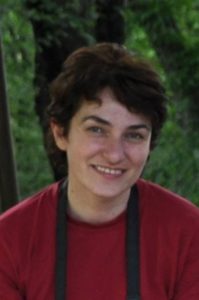 Natalia Chitishvili
Natalia Chitishvili
Natalia Chitishvili has been a PhD student at Tbilisi State Academy of Art since 2016. Her research focuses on the design of sacred spaces in medieval Georgia and how they evolved over the centuries following changes in religious practices.
Elif Demirtiken
Elif Demirtiken is currently reading for a PhD in Classics at the University of Edinburgh under the supervision of Prof Niels Gaul. After having received two MA degrees, one in Archaeology and History of Art at Koç University (Istanbul, 2010-2012) with a focus on Late Antique and Byzantine Studies and a second one in Comparative History at Central European University (CEU), Budapest, Elif’s research in Edinburgh focuses on the social topography of religious communities in late Byzantine Constantinople. She investigates how different religious groups claimed the cityscape and how they participated in the daily life of the city through various religious and non-religious activities in the thirteenth-fourteenth centuries.
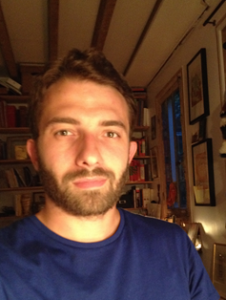 Dr Maxime Durocher
Dr Maxime Durocher
Maxime Durocher completed his PhD at Sorbonne University (Paris, France) and is a Research Fellow at the Alexander von Humboldt Kolleg for Islamicate Intellectual History, at Bonn University (Germany). His main research interest is the religious architecture of Sufi communities in medieval Anatolia (13th-15th century). He also focuses on the relations between Christians and Muslims in northern Turkey where some dervish lodges were shared sanctuaries.
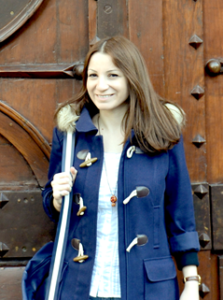 Dr Gohar Grigoryan Savary
Dr Gohar Grigoryan Savary
Gohar Grigoryan completed her PhD at the University of Fribourg (Switzerland) in 2017 on royal images of the Armenian kingdom of Cilicia. She has worked at the Matenadaran Institute of Ancient Manuscripts in the departments of Codicology and Art History. Grigoryan is the recipient of the SAS Best Conference Paper Award in Armenian Studies 2015 for her paper on the image of Crown Prince Lewon depicted in the Matenadaran manuscript 8321. Her main research interests include Armenian royal ideology, medieval Armenian art and architecture, intercultural exchanges, codicology, historiography, and old printed books. Currently, she is a postdoctoral researcher on the Swiss National Scientific Foundation project “Royal Epiphanies: The King’s Body as Image and Its Mise-en-Scène in the Medieval Mediterranean (12th-14th centuries)”.
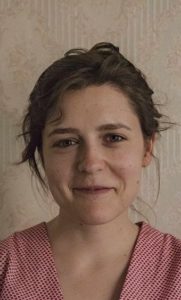 Polina Ivanova
Polina Ivanova
Polina is a PhD Candidate in the Department of History at Harvard University. Her research interests include history of migration, mobility and transformation of human geography in medieval Anatolia, as well literary and linguistic contacts between medieval Iran, Anatolia and the Caucasus.
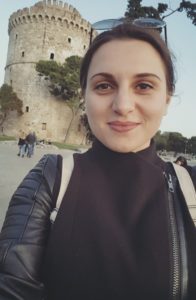 Sima Meziridou
Sima Meziridou
Sima Meziridou is a PhD Candidate at Johannes Gutenberg Universität-Mainz, Germany. Her research focuses on the cross-cultural exchanges in late medieval Trebizond between Byzantine Greeks and Ottoman Turks after 1461, and on the transition of the urban topography from the Late Byzantine to Early Ottoman period. She was previously a Fellow at Leibniz-Institut für Europäische Geschichte Mainz, Germany and a research assistant for the research group “Protection in Periods of Political and Religious Expansion 500-1500”, in the Transcultural Studies Institute at University of Heidelberg, Germany.
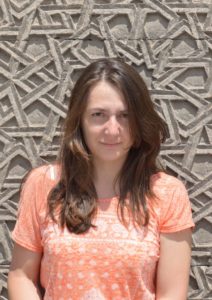 Natia Natsvlishvili
Natia Natsvlishvili
Natia is a PhD student at Ilia State University (Tbilisi, Georgia). Her PhD research examines Georgian and Armenian Catholic church architecture in relation with the aspects of religious and ethnic identity. Her sphere of professional interests also includes Medieval Georgian master builders – their status, training, and construction methods, and early Byzantine fortifications of West Georgia. She works as a researcher at the George Chubinashvili National Research Centre for Georgian Art History and Heritage Preservation (Tbilisi, Georgia).
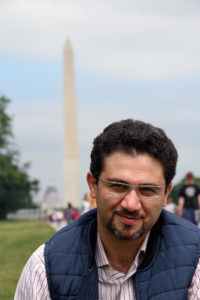 Dr Hadi Safaeipour
Dr Hadi Safaeipour
Hadi Safaeipour is an assistant professor at the Center for Iranian Architectural Studies and Documentation at the Faculty of Architecture and Urban Planning, Iran’s Shahid Beheshti (former National) University. For over a decade, he has engaged with the study of different types of Persian vaulted and domed structures. In 2014, he co-edited a two-volume book entitled Persian Architecture: its Structure and Construction, with Professor Gh.H. Memarian which was awarded the annual Iranian Book Prize. He earned his PhD in Architecture from Tehran’s Tarbiat Modares University in 2015 on the study of Iranian contemporary masons’ design resources. His research areas include the history of Iranian architecture with a special focus on the history of architectural technology and craftsmanship in Iranian Islamic architecture. These scholarly pursuits have been informed by his involvement in the restoration of major architectural monuments in Iran and Iraq.
Hale Telli
Hale Telli is a research assistant in the Art History Department of Bitlis Eren University since 2011. She is also a PhD candidate at Ege University in the Art History Department. Her research focuses on the interactions between medieval Muslim and Christian art, especially in Eastern Anatolia, the Caucasus and Iran.


